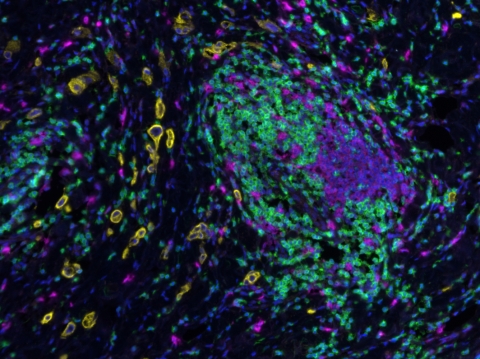MONTPELLIER, France--(BUSINESS WIRE)--Recent clinical data confirm the importance of patient stratification in the development of cancer immunotherapies. For instance Merck’success with Keytruda (Pembrolizumab, anti PDL-1) in lung cancer demonstrates that the patient screening according to the ligand overexpression of the therapeutic target is a winning strategy in immuno-oncology.
Though the pertinence of personalized medicine in oncology cannot be argued, one must also consider that the reactivation of the immune system against tumors engage subtle and complex mechanisms, which can be more efficient when multiple pathways are simultaneously activated. This opinion is commonly shared by many researchers in immuno-oncology who engage clinical trials combining therapies against several targets.
If clinical results confirm the relevance of this approach, it will be necessary to qualify patients on the basis of multiple biomarkers. Given the fact that a biopsy can only be used on a few histological slides, an obvious conclusion arises: it becomes urgent to extract several markers from a single slide.
Positive progress of liquid biopsy and molecular biology could potentially address this issue. But these solutions do not allow to localize the marker, which is sometimes required. To get more precise information on the tumor microenvironment, the protein expression is not enough: associated morphologic information needs to be known.
Nowadays several clinical trials in immuno-oncology rely on multiplex immunohistochemistry to use a sufficient number of markers despite the scarcity of biological material. It can be anticipated that the routine histopathologic diagnostic will integrate multiplex analysis of markers so that pathologist can try this new challenge: characterize tumor immune profile from a single biopsy.
Cultural and technological barriers will have to be removed in order to let histopathology progress as fast as the innovations in immuno-oncology. For instance fluorescence revelation is not commonly used by the pathologists. Complex multiplex IHC staining require slide scanners compatible with multispectral imaging, which is not widely spread. Then the volume of data processed from multiplex staining will require to use image analysis solutions able to facilitate the pathologist’s diagnostic. This is a new paradigm for histopathology which is evolving toward a more subtle science than it was already, being source of “rich-data” for the treatment of patients.
This new generation histopathology, led by “augmented pathologists” and able to define the tumor immune profile from one single biopsy, is developed by HISTALIM under the brand named HISTOPROFILE.




